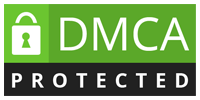As a retail business owner, it’s important to protect your website from cyberattacks. Not only can these attacks damage your reputation and disrupt your operations, but they can also result in the loss of sensitive customer information.
I help retail businesses in the greater DC area that are challenged with unreliable business systems to improve their reliability and security to ensure their businesses hum!
Want to discuss your situation? No obligation! [email protected]
One of the most common types of cyberattacks on retail websites is called a “distributed denial of service” (DDoS) attack. This occurs when a hacker floods a website with traffic, overwhelming the server and causing the website to crash. DDoS attacks can be particularly damaging for e-commerce websites, as they can prevent customers from being able to make purchases.
To protect your retail website from DDoS attacks, there are several steps you can take:

- Use a web application firewall (WAF). A WAF is a security system that sits between your website and the internet and monitors incoming traffic for malicious activity. If a WAF detects a potential DDoS attack, it can block the traffic before it reaches your website, protecting it from being overwhelmed.
- Implement rate limiting. Rate limiting is a technique that allows you to control the amount of traffic that can access your website. By setting limits on the number of requests that can be made to your website in a given period of time, you can prevent DDoS attacks from overwhelming your server.
- Use a content delivery network (CDN). A CDN is a network of servers that can distribute the load of incoming traffic across multiple locations. This can help prevent a single server from being overwhelmed by a DDoS attack, and can also improve the overall performance of your website.

In addition to DDoS attacks, retail websites are also vulnerable to other types of cyberattacks, such as phishing scams and malware infections. To protect against these threats, you should take the following steps:
- Use strong passwords. Ensure all accounts on your website, including admin accounts, have strong and unique passwords. Avoid using common words or phrases, and consider using a password manager to generate and store complex passwords.
- Keep your website and software up to date. Cybercriminals often exploit vulnerabilities in outdated software to gain access to your website. Regularly updating your website and any software you use can reduce the risk of these vulnerabilities being exploited.
- Use secure connections. Ensure all connections to and from your website are encrypted, using secure protocols such as HTTPS. This will prevent hackers from being able to intercept and read sensitive information, such as customer payment details.
Following these steps can help protect your retail website from cyberattacks and keep your customers’ information safe. Regularly monitoring and updating your website’s security measures is essential, as cybercriminals constantly evolve their tactics and find new ways to target vulnerable websites.
I help retail businesses in the greater DC area that are challenged with unreliable business systems to improve their reliability and security to ensure their businesses hum!
Want to discuss your situation? No obligation! [email protected]





